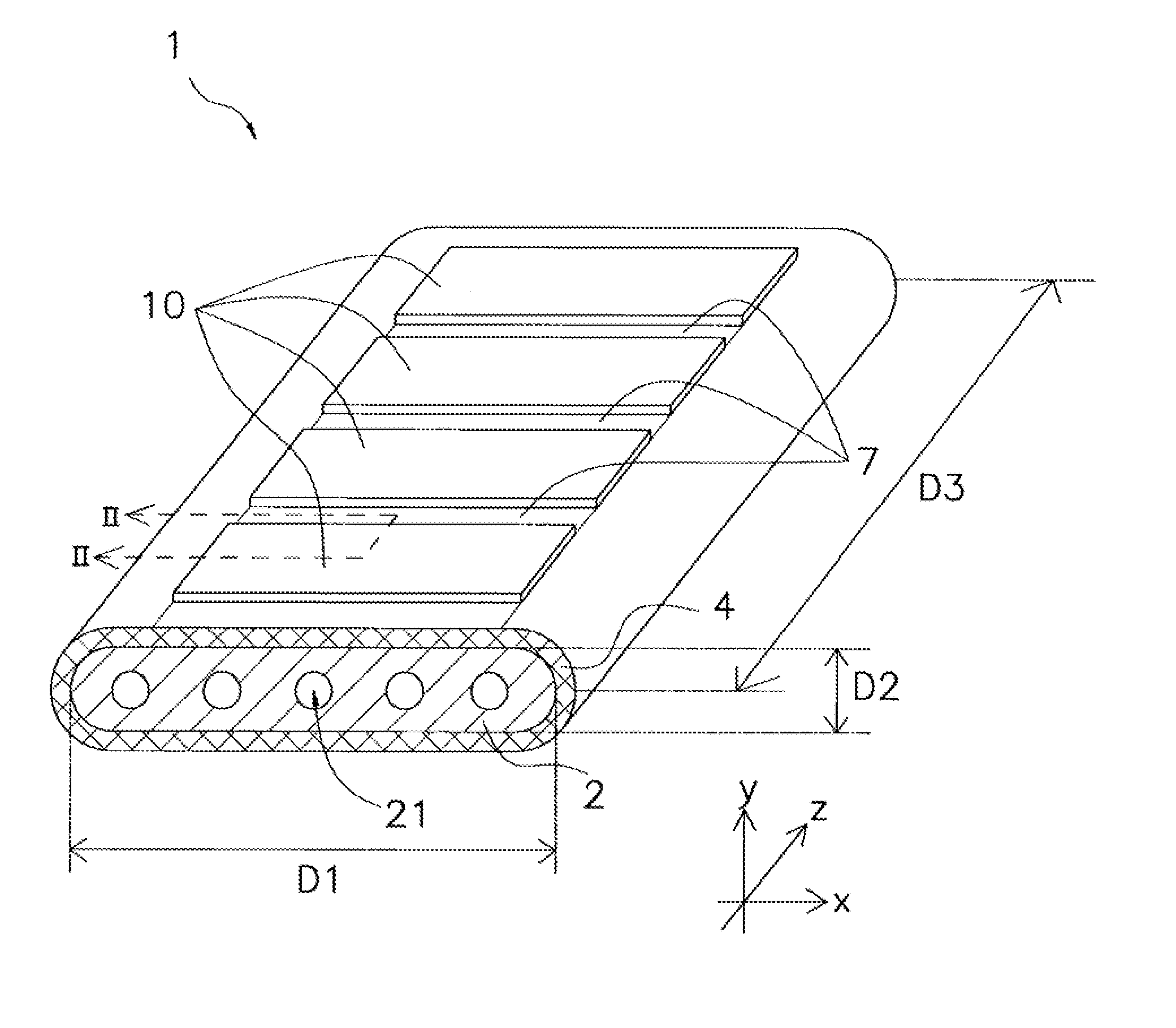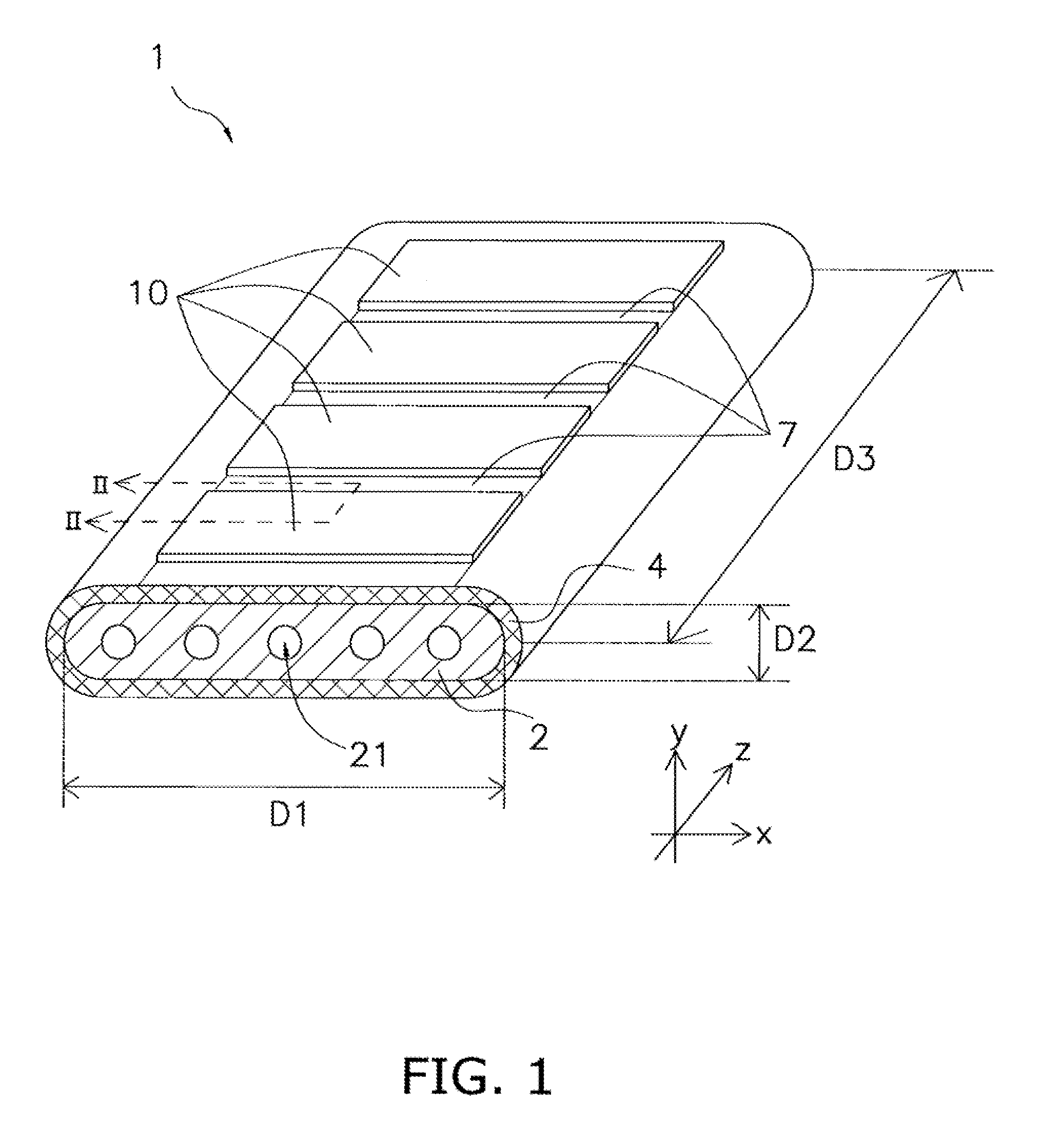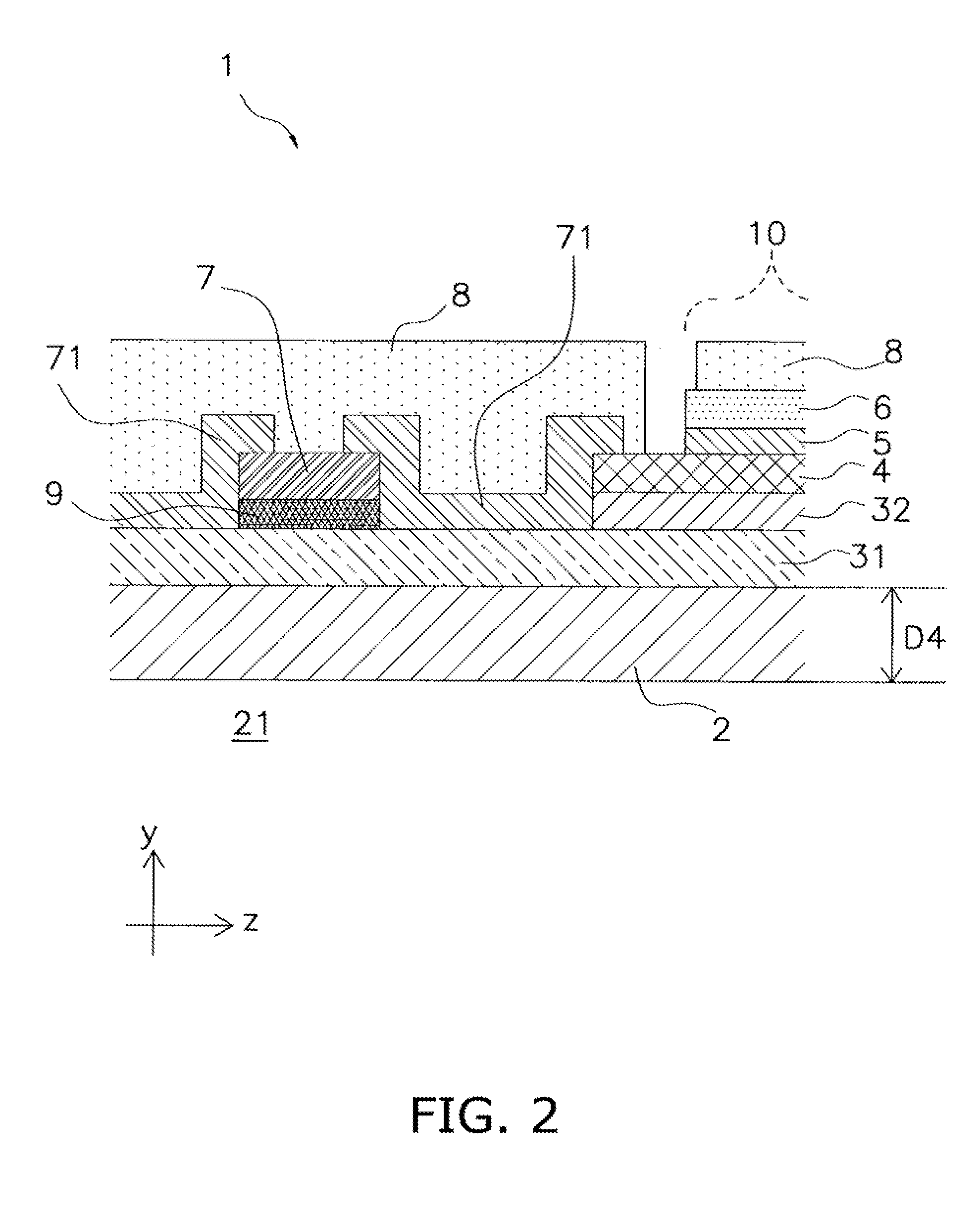Solid oxide fuel cell
a fuel cell and solid oxide technology, applied in the field of solid oxide fuel cells, can solve the problems of gas leakage, defect likely to occur, etc., and achieve the effect of reducing gas leakag
- Summary
- Abstract
- Description
- Claims
- Application Information
AI Technical Summary
Benefits of technology
Problems solved by technology
Method used
Image
Examples
example 1
1. EXAMPLE 1
[0030]As shown in FIGS. 1 and 2, the segmented-in-series solid oxide fuel cell (hereinafter simply referred to as a “fuel cell”) 1 of this example includes a support substrate 2, an anode (including an anode current collecting layer 31 and an anode active layer 32), an electrolyte layer (solid electrolyte layer) 4, a barrier layer 5, a cathode 6, an interconnector 7, a sealing portion 71, and a current collector 8. In FIG. 1, the current collector 8 is not shown for convenience of description.
[0031]The fuel cell 1 has power generating elements 10. The power generating element 10 includes the anode (31, 32) and the cathode 6 that corresponds to the anode (31, 32). Specifically, the power generating element 10 includes the anode (31, 32), the electrolyte layer 4, the barrier layer 5, and the cathode 6 that are stacked in the thickness direction (y-axis direction) of the support substrate 2.
[0032]The support substrate 2 has a shape that is flat and elongated in one directio...
examples
[0112]Preparation of Samples
[0113]Evaluation samples illustrated in FIG. 17 were prepared as described below.
[0114]A porous substrate 30 as shown in FIG. 17 (corresponding to the above-described anode current collecting layer 31 and support substrate 2) was formed as follows. NiO powder and Y2O3 powder were mixed so that Ni / Y2O3 ratio is 40:60 vol % after reduction process. Cellulose powder in an amount of 20 wt % relative to the total weight of NiO powder and Y2O3 powder was added as a pore forming agent, and mixed. The mixture was granulated by an SD method (spray dry method). The resulting granules were subjected to uniaxial pressing at a pressure of 40 MPa, thus giving a green body in a pellet form (thickness of 2000 μm). The diameter of the pellets was 50 mm.
[0115]An interlayer 9 (thickness of 5 μm, diameter of 25 mm) was formed as follows. NiO powder and (La, Ca)CrO3 powder (Ca content of 20 mol % in A site) were mixed in a ratio of Ni:(La, Ca)CrO3=1:1 (volume ratio) after red...
PUM
| Property | Measurement | Unit |
|---|---|---|
| Weight ratio | aaaaa | aaaaa |
Abstract
Description
Claims
Application Information
 Login to View More
Login to View More - R&D
- Intellectual Property
- Life Sciences
- Materials
- Tech Scout
- Unparalleled Data Quality
- Higher Quality Content
- 60% Fewer Hallucinations
Browse by: Latest US Patents, China's latest patents, Technical Efficacy Thesaurus, Application Domain, Technology Topic, Popular Technical Reports.
© 2025 PatSnap. All rights reserved.Legal|Privacy policy|Modern Slavery Act Transparency Statement|Sitemap|About US| Contact US: help@patsnap.com



